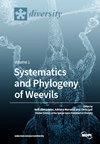Genetic and Ecological Approaches to Introduced Populations of Pumpkinseed Sunfish (Lepomis gibbosus) in Southwestern Europe
IF 2.1
3区 生物学
Q2 BIODIVERSITY CONSERVATION
引用次数: 0
Abstract
Freshwater systems are among the most affected by the introduction of exotic species. The pumpkinseed sunfish Lepomis gibbosus, a centrarchid native to eastern North America, is listed among the top ten introduced freshwater fishes with the greatest ecological impact globally. Despite this, genetic and evolutionary studies of the species are still scarce. Here, we analyzed the genetic variability of introduced populations of L. gibbosus using three mitochondrial genes (COI, d-loop, and ND1). In addition, we used species distribution modeling to compare the niche of introduced versus native populations to assess the present and potential future distribution of the species under different climate change scenarios. Compared with the native populations, introduced ones present a lower level of genetic variability, indicating these populations originated from a small number of individuals from the native (Atlantic) population in the USA and Canada. The low variability was likely driven by a founder effect and subsequent bottleneck, as often occurs in invasive species. Our modeling results suggest not only that L. gibbosus modified its niche during the invasion process in Europe but also the possible global expansion of the species under future climatic conditions, which could facilitate its establishment in almost all continents.欧洲西南部南瓜子翻车鱼引种种群的遗传和生态研究
淡水系统是受外来物种引进影响最大的系统之一。南瓜子翻车鱼(Lepomis gibbosus)是一种原产于北美东部的中央科鱼类,被列为全球十大生态影响最大的引进淡水鱼之一。尽管如此,该物种的遗传和进化研究仍然很少。本研究利用3个线粒体基因(COI、d-loop和ND1)分析了引进的长臂猿种群的遗传变异性。此外,我们还利用物种分布模型对引进种群和本地种群的生态位进行了比较,以评估不同气候变化情景下物种的现状和潜在未来分布。与本土种群相比,引进种群的遗传变异水平较低,表明这些种群起源于美国和加拿大本土(大西洋)种群的少数个体。低变异性可能是由奠基者效应和随后的瓶颈驱动的,正如入侵物种经常发生的那样。我们的模拟结果表明,在欧洲的入侵过程中,长臂猿不仅改变了其生态位,而且在未来的气候条件下,该物种可能在全球扩张,这可能有助于其在几乎所有大陆的建立。
本文章由计算机程序翻译,如有差异,请以英文原文为准。
求助全文
约1分钟内获得全文
求助全文
来源期刊

Diversity-Basel
Environmental Science-Ecological Modeling
CiteScore
3.40
自引率
12.50%
发文量
925
审稿时长
11 weeks
期刊介绍:
Diversity (ISSN 1424-2818) is an international and interdisciplinary journal of science concerning diversity concept and application, diversity assessment and diversity preservation. It is focused on organismic and molecular diversity. It publishes reviews, regular research papers and short notes in the regular issues. Related news and announcements are also published. Our aim is to encourage scientists to publish their experimental and theoretical results in as much detail as possible. Therefore, there is no restriction on the length of the papers. Full experimental details must be provided so that the results can be reproduced.
 求助内容:
求助内容: 应助结果提醒方式:
应助结果提醒方式:


